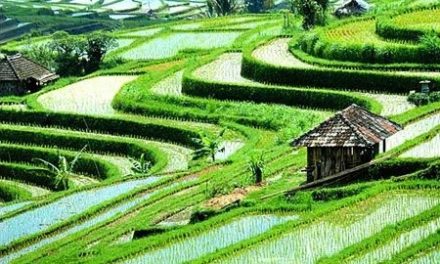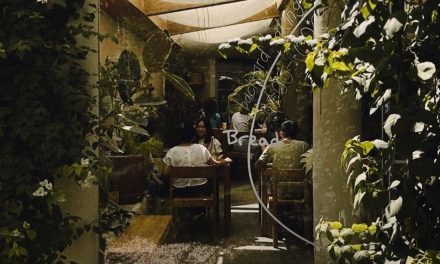When you think of Bali, images of lush green landscapes, mystical temples, and vibrant culture likely come to mind. Among the most iconic sights of this paradise is undoubtedly the breathtaking Ubud rice terraces. These terraces not only capture the essence of Bali’s natural beauty, but they also hold a fascinating history and deep significance in the local culture. Let me take you on a journey through the intriguing story of the Ubud rice terraces, sprinkled with personal anecdotes and relatable insights along the way.
A Glimpse into the Past
The Ubud rice terraces, particularly those in Tegallalang and Jatiluwih, have been a part of Balinese life for centuries. The terraced fields date back to the 9th century when irrigation systems were introduced by the Balinese. The subak system, a cooperative water management system embraced by local farmers, plays a crucial role in the cultivation process. Subak reflects the Balinese philosophy of Tri Hita Karana, which emphasizes balance among the spiritual, social, and environmental aspects of life.
I remember my first visit to these terraces as if it were yesterday. Standing on the edge of Tegallalang, I was mesmerized by the lush green layers of rice paddies cascading down the hillside. The sound of water trickling through the canals and the gentle flutter of the wind through the leaves created a peaceful ambiance that washed over me. I could definitely understand why tourists, photographers, and even artists find such inspiration in these fields.
The Craft of Rice Farming
Rice, as we know, is a staple food in Indonesia, and for the Balinese, it holds even greater significance as a symbol of life and prosperity. But cultivating rice in these terraces requires a lot more than just water and seeds. It involves a deep connection between the farmers and the land.
One key aspect of this connection is the communal aspect of rice farming. Families work together, often joined by neighbors, to plant and harvest the crops. I recall visiting a local farm where a friendly farmer invited me to join their harvest. Hesitant yet excited, I picked up a sickle and tried my hand at cutting the rice. The labor was hard, but laughter and camaraderie made the toil feel worthwhile. It gave me a new appreciation for the farmers’ dedication and their symbiotic relationship with nature.
Cultural Significance
The Ubud rice terraces are not just agricultural spaces; they are cultural landmarks steeped in rituals and traditions. The Balinese Hindu culture celebrates various ceremonies that honor and give thanks for the harvest. The most notable of these is the Piodalan ceremony, where farmers make offerings to the rice goddess, Dewi Sri, to ensure a bountiful harvest. Experiencing one of these ceremonies was a highlight of my travels. The colorful decorations, incense wafting through the air, and the rhythmic sounds of traditional gamelan music created an atmosphere that felt both spiritual and communal.
There’s also the picturesque backdrop that has made these terraces a driving force behind Bali’s tourism. The visibility of the terraces in social media, especially on platforms like Instagram, has turned them into a bucket-list place for many travelers. However, it’s essential to approach these wonders with respect and an awareness of their significance beyond the picturesque.
Sustainable Farming Practices
As the world becomes more eco-conscious, the practices seen in Ubud’s rice terraces are a shining example of sustainable agriculture. The subak system is not just effective; it is sustainable and promotes biodiversity. Farmers rotate crops, utilize organic methods, and maintain the water systems that support not only the rice but also the entire ecosystem surrounding them.
Here’s a practical tip for those who want to help preserve this beauty while visiting: consider staying at eco-friendly accommodations. Many local homestays and guesthouses focus on sustainable practices, allowing you to enjoy your stay while supporting the community and their efforts to maintain the land.
A Personal Reflection
Reflecting on my experiences in Ubud and the rice terraces, I find that they represent more than just a tourist attraction. They symbolize the resilience and adaptability of the Balinese people and their commitment to preserving their culture and environment.
As I wandered through the terraces, I felt a sense of peace and connection to something much larger than myself. It prompted me to think about our own practices in modern society and how we, too, can find balance in our lives. Whether through supporting local farmers, engaging in environmental initiatives, or simply slowing down to appreciate the beauty that surrounds us, there are countless ways to honor the land and the people who cultivate it.
Conclusion
In summary, the Ubud rice terraces are a testament to the intertwined relationship between nature, culture, and community. Their history is steeped in the dedication of generations of farmers who have worked these lands using sustainable practices that honor centuries-old traditions. Whether you’re planning a visit or simply curious about this remarkable part of Bali, remember that the rice terraces are more than just a visual feast—they are a living, breathing part of Balinese heritage, waiting to be appreciated and respected.So, the next time you find yourself dreaming of Bali, think of those iconic green terraces and the stories they hold. Consider planning a visit that not only satisfies your wanderlust but also honors the culture and people behind this incredible landscape. After all, the journey into the heart of Ubud’s rice terraces is as enriching as it is unforgettable.






